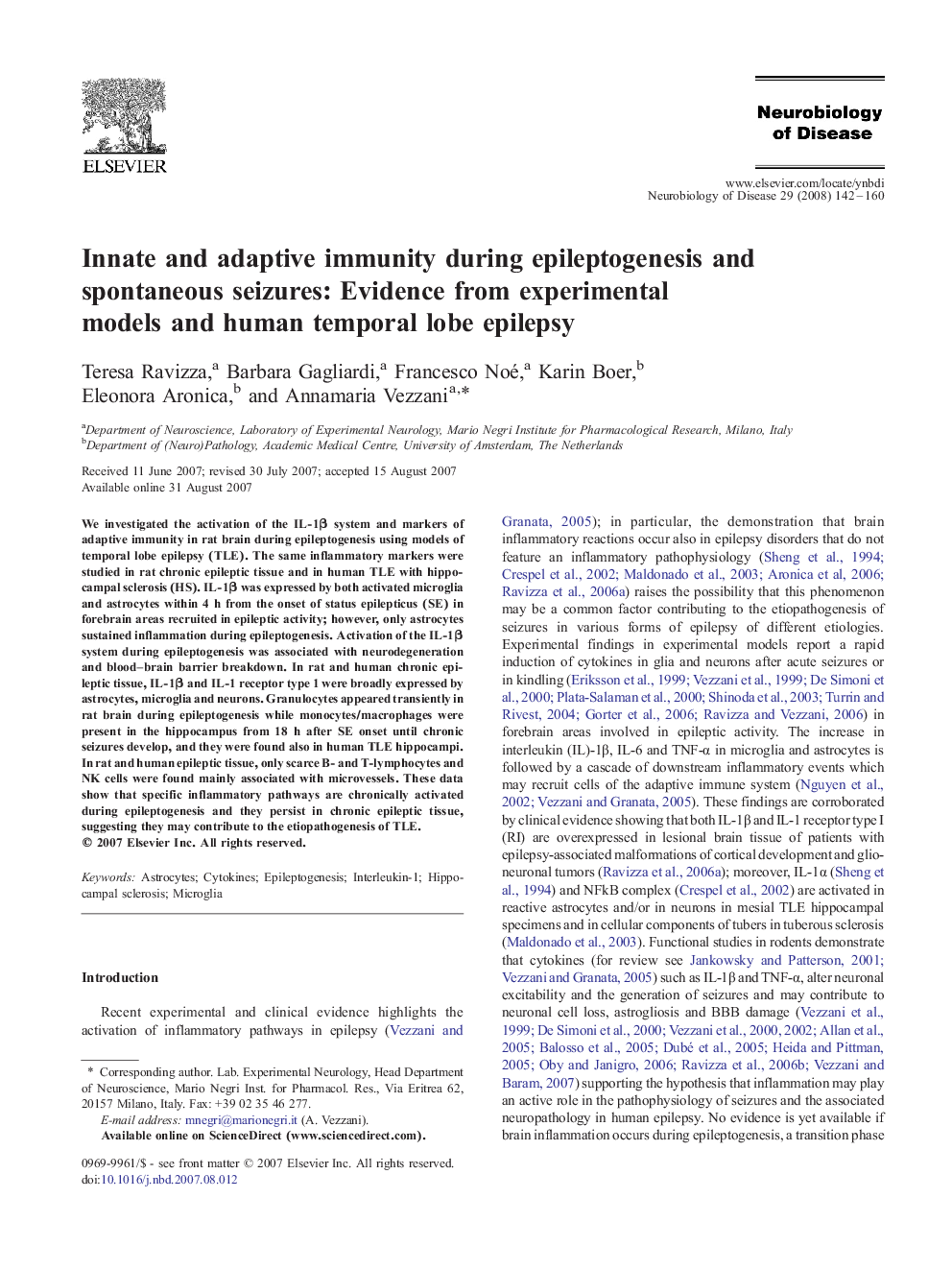| Article ID | Journal | Published Year | Pages | File Type |
|---|---|---|---|---|
| 3070700 | Neurobiology of Disease | 2008 | 19 Pages |
We investigated the activation of the IL-1β system and markers of adaptive immunity in rat brain during epileptogenesis using models of temporal lobe epilepsy (TLE). The same inflammatory markers were studied in rat chronic epileptic tissue and in human TLE with hippocampal sclerosis (HS). IL-1β was expressed by both activated microglia and astrocytes within 4 h from the onset of status epilepticus (SE) in forebrain areas recruited in epileptic activity; however, only astrocytes sustained inflammation during epileptogenesis. Activation of the IL-1β system during epileptogenesis was associated with neurodegeneration and blood–brain barrier breakdown. In rat and human chronic epileptic tissue, IL-1β and IL-1 receptor type 1 were broadly expressed by astrocytes, microglia and neurons. Granulocytes appeared transiently in rat brain during epileptogenesis while monocytes/macrophages were present in the hippocampus from 18 h after SE onset until chronic seizures develop, and they were found also in human TLE hippocampi. In rat and human epileptic tissue, only scarce B- and T-lymphocytes and NK cells were found mainly associated with microvessels. These data show that specific inflammatory pathways are chronically activated during epileptogenesis and they persist in chronic epileptic tissue, suggesting they may contribute to the etiopathogenesis of TLE.
